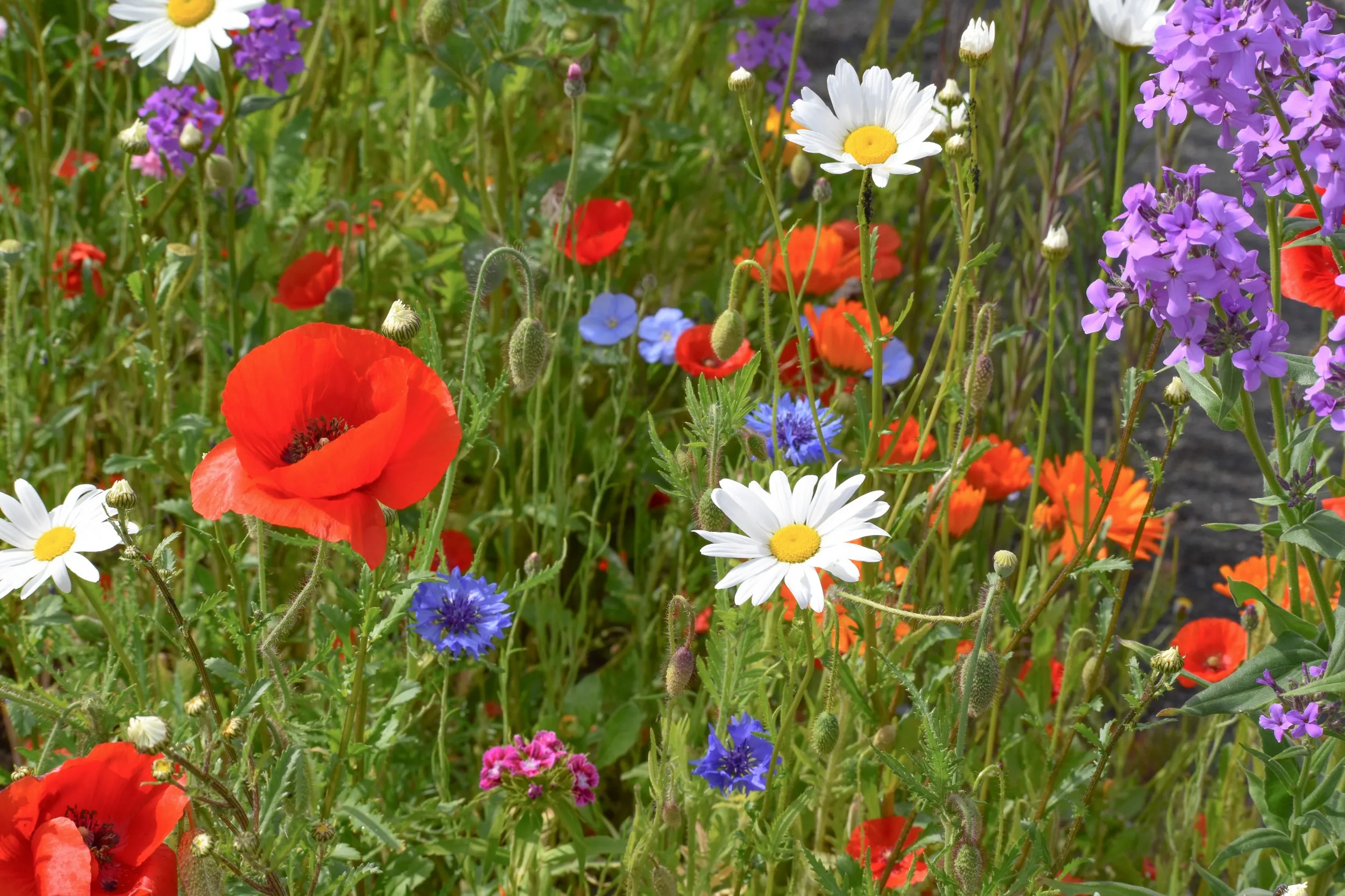Four ways to welcome wildlife into your spring space
This month’s special feature comes from keen gardener Jenna Taylor, who is creating wildlife-friendly areas in her Oxfordshire garden. Here she shares her four tried and tested ways to help wildlife in spring.
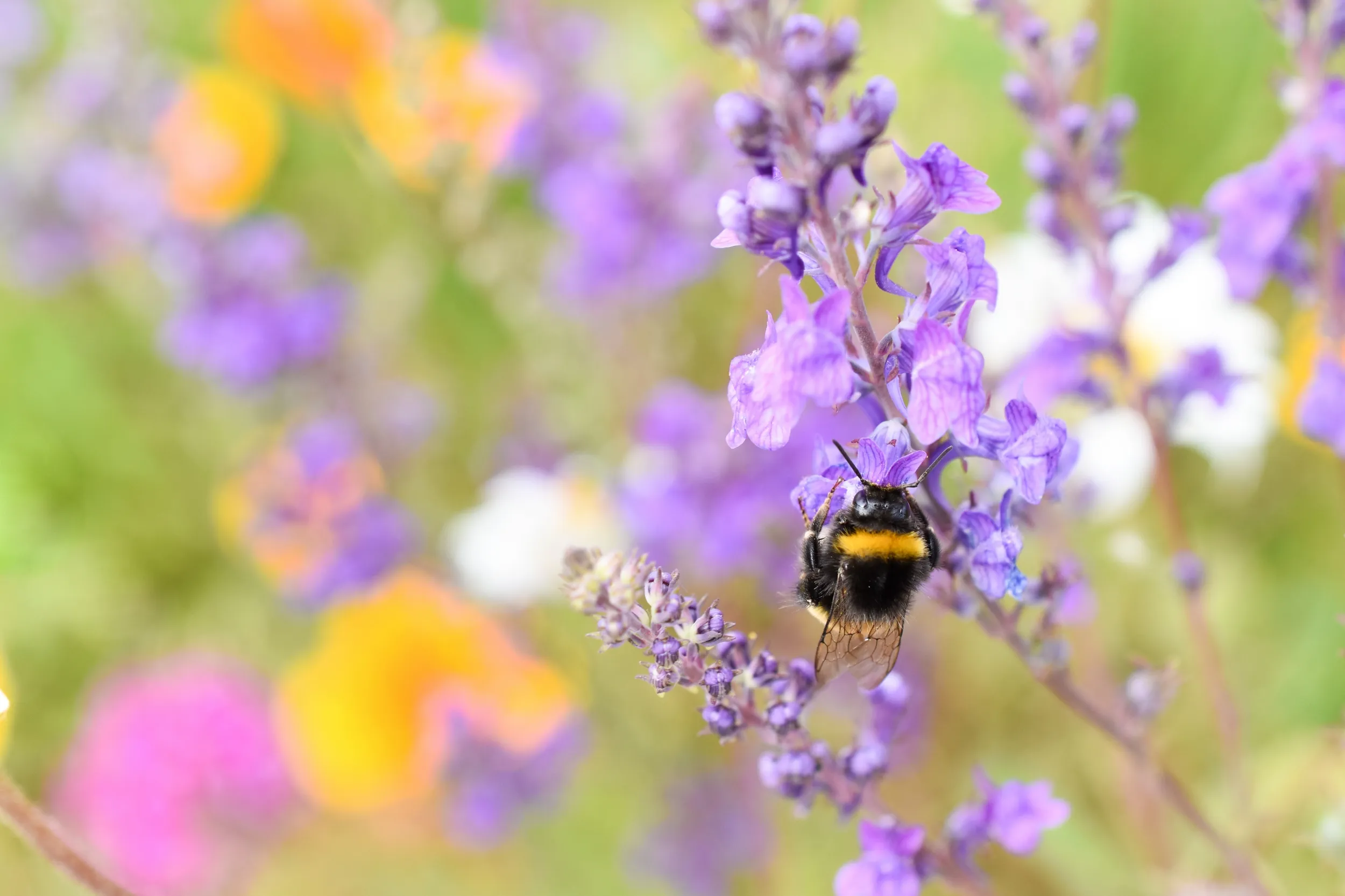
On this page
As dark, cold winter days transition into spring, daffodils and crocuses are now bringing much needed colour. It can be an excellent reminder of what we can do to help the diverse wildlife around us. Explore four ways to entice wildlife into your outdoor space this spring.
Create water sources
Wildlife, like humans, depend on water throughout the year. Birds, in particular, rely on water for daily drinking and bathing to maintain healthy feathers.

My garden features various water sources such as terracotta plates, a standalone bird bath and a recycled water butt turned into a small pond! Regular visitors include Magpies, Starlings, Robins, Blue and Great Tits, Blackbirds, the resident Wren and Wood Pigeons. I’ve even spotted a Frog hiding amongst the protection of the pond sedge and a Hedgehog having a late-night drink. Surrounding your water source with plants or a small log pile will add protection and encourage other wildlife.
Most importantly though, make sure any wildlife that can get into the pond can also get out. One way to do this is to ensure at least one side of the pond has a long, shallow slope. You can do this by adding some stones or rocks to build a slope. Another option is to partially submerge a log, weighting down one end in the water to keep it below the surface. You could even make a wooden ramp from a plank of wood, but be sure to add groves or cover with chicken wire to provide grip. Explore how to make a wildlife pond whether large or small.
Build a minibeast hotel or log pile
It’s important to make homes for insects and other minibeasts. You can purchase bug hotels, or you can build a hotel to suit your space. We’ve started constructing a minibeast hotel using recycled materials. One section contains a mixture of foraged twigs and branches, dried lavender stems and bamboo. We’ve also drilled holes into wood for bees to nest in. It's been fascinating to see just how quickly the bees find and use the holes, sealing the nest chambers with mud and leaves. Discover tips to build a minibeast hotel.
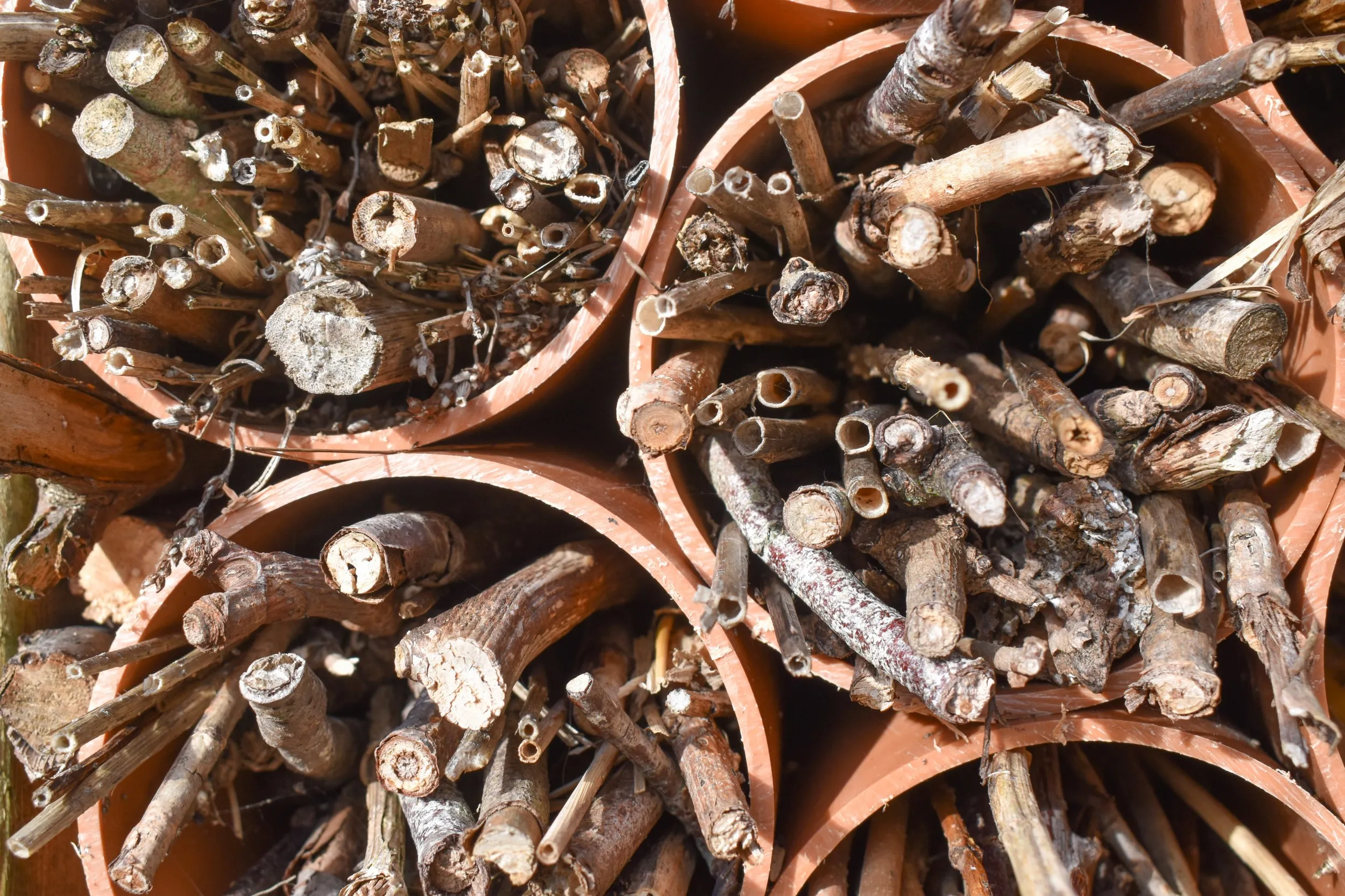
I also stack medium-sized logs of wood (mostly the chopped-up trunk of our Christmas tree!) on the patio and regularly scatter them with bird food. This attracts lots of visitors and adds a challenge for birds to reach into the nooks to retrieve their food.

Grow wildlife-friendly flowers
UK pollinators are declining, but we can grow flowers to help pollinators thrive. A wildflower mix in your garden, balcony, window box or even a pot can attract bees, butterflies, ladybirds and more. Read advice on growing wildlife-friendly flowers to entice wildlife to your outdoor space.
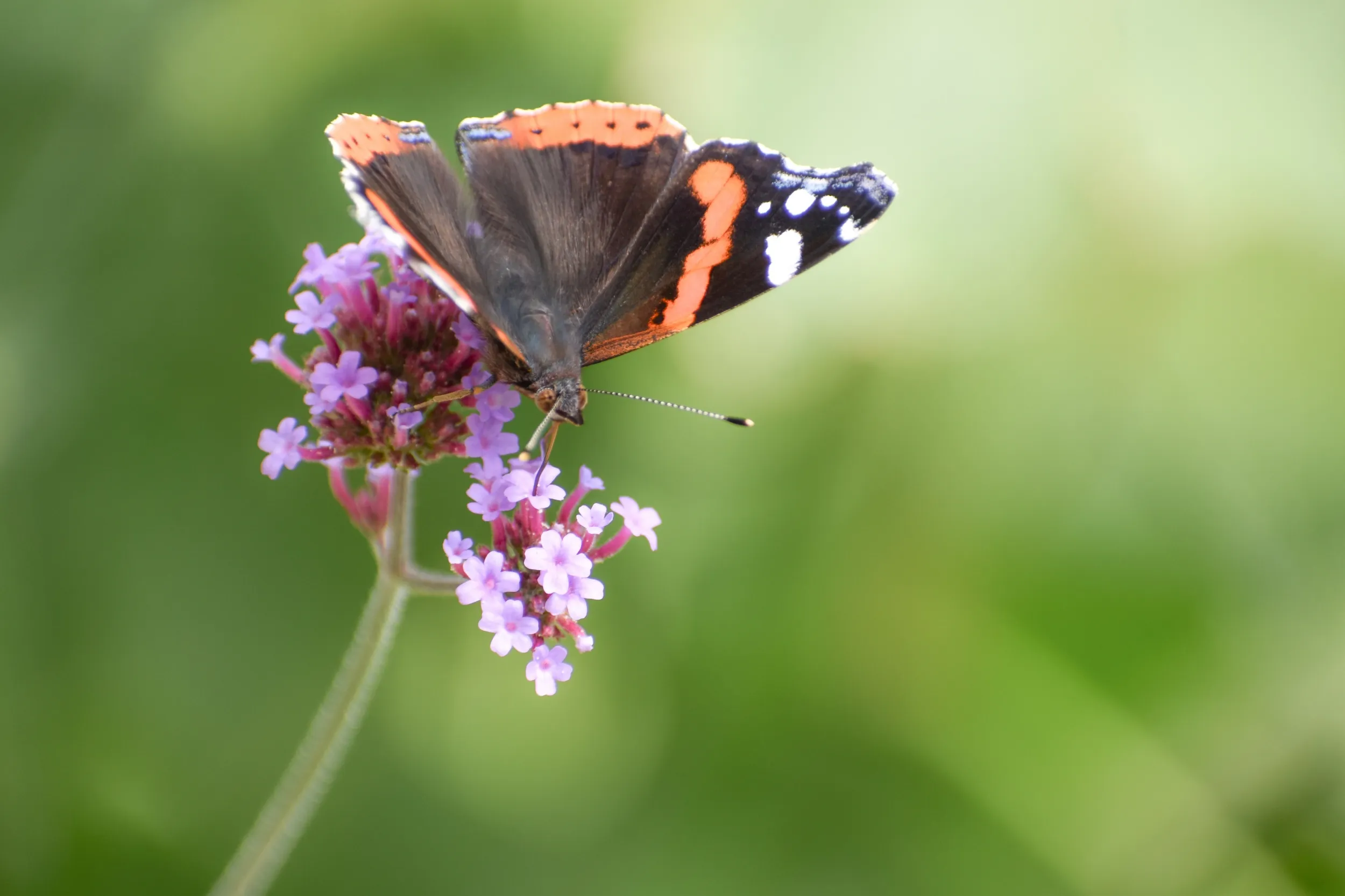
Teasels, verbenas, wildflowers, dahlias, nasturtium, lavenders, Primrose and native honeysuckles are excellent wildlife attractants and now is the perfect time to start sowing seeds. My husband and I adopt a ‘hands-off’ approach with some aspects of our gardening now. The Teasels, hollyhocks and verbenas are left to go to seed, which encourages large groups of Goldfinches to forage, whilst Blue Tits are seen regularly clinging to a branch and retrieving seeds.
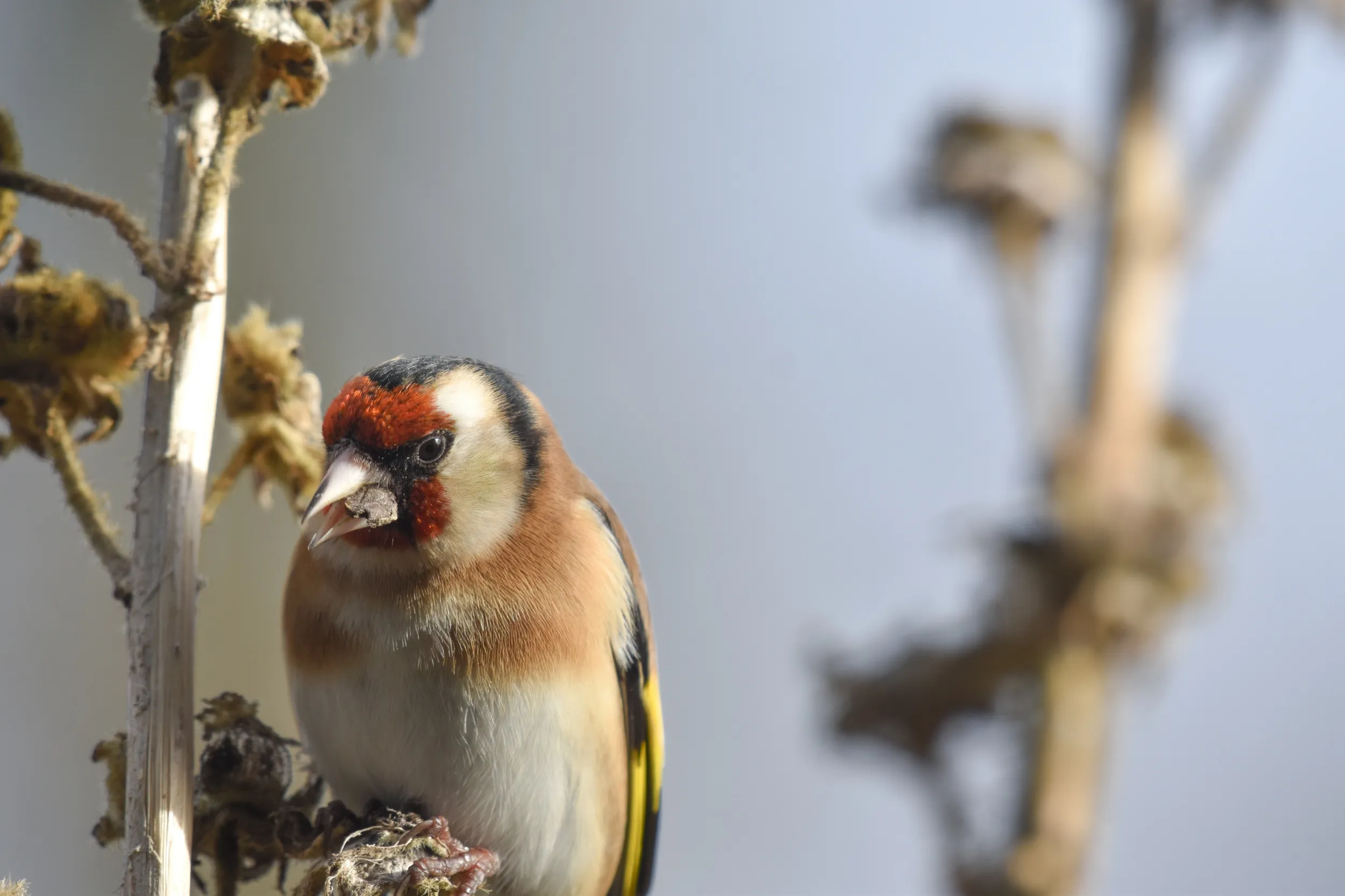
Hang up bird feeders or window feeders
Birds love extra sources of food, and freestanding bird feeders or window feeders are excellent ways to entice them into your outdoor space. Position your feeders where birds have some protection from predators. Window feeders offer the advantage of allowing you to view birds up close while providing a safe space for them to enjoy a feast.
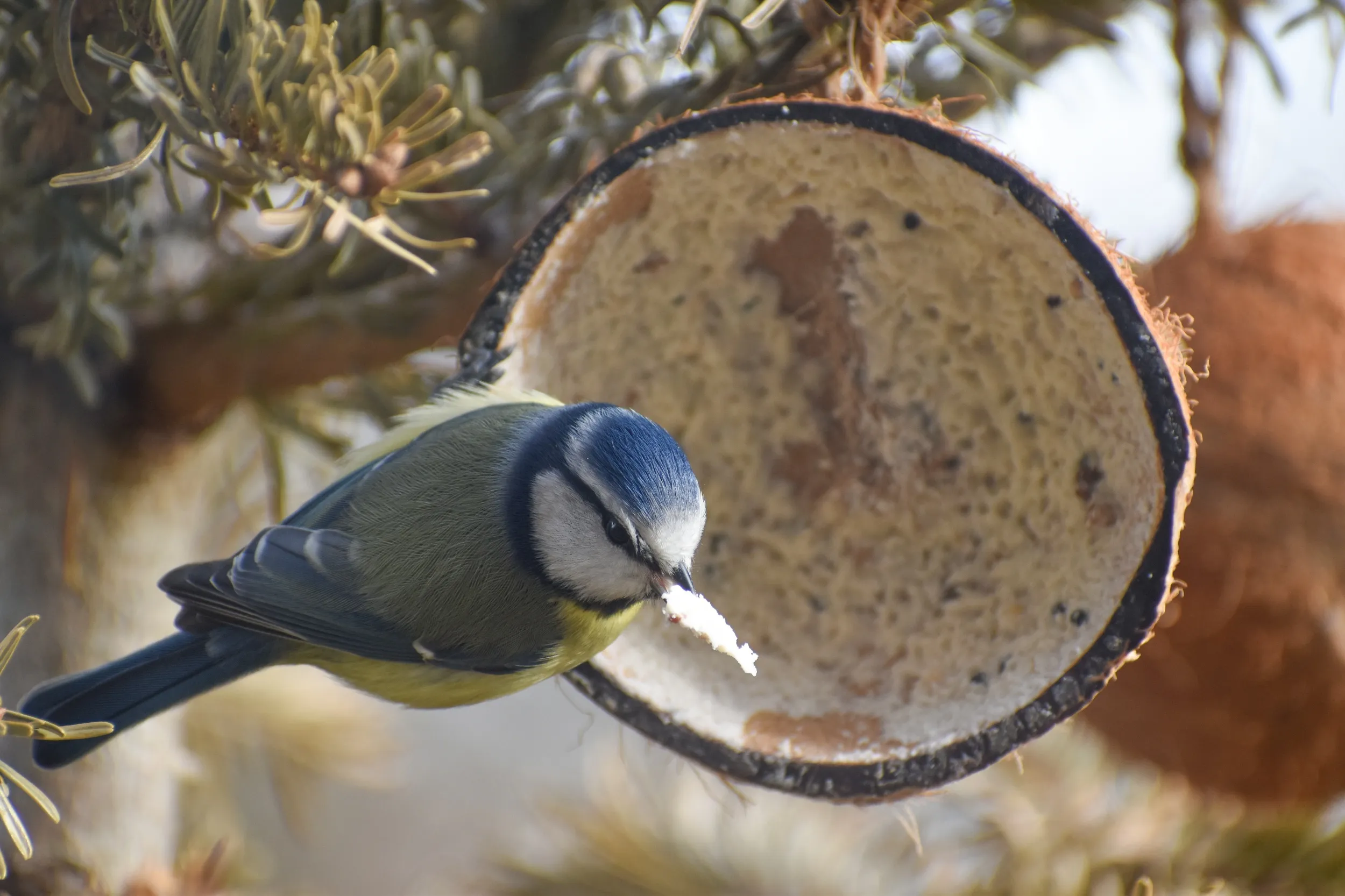
For a DIY approach – you can make a pinecone feeder. You’ll need suet or lard, string for hanging the feeder and a bird mix (such as mealworms, bird seed, raisins, peanuts and grated cheese) to push into the crevices. I have also used reused coconut feeders and hung them on the trellis and the Christmas tree. When they’re empty you can refill them. Very eco-friendly and cost effective!
One thing to always remember, however, is feeder hygiene. To help keep your garden birds healthy, it’s vital to regularly clean feeders and bird baths and remove any old food. Take a look at this guide to healthy birds to find out more.
Enjoy the wildlife in your outdoor space
Hopefully these ideas will help you to attract a variety of wildlife to your garden or outdoor space, promoting a low-maintenance approach that offers food, shelter, and habitats to benefit nature.
